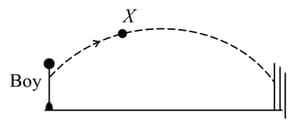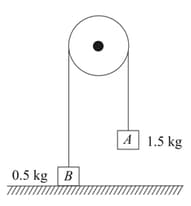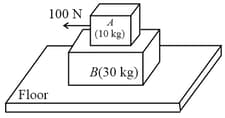Embibe Experts Solutions for Chapter: Laws of Motion, Exercise 1: AP EAPCET 2019 (21-Apr Shift-2)
Embibe Experts Physics Solutions for Exercise - Embibe Experts Solutions for Chapter: Laws of Motion, Exercise 1: AP EAPCET 2019 (21-Apr Shift-2)
Attempt the free practice questions on Chapter 13: Laws of Motion, Exercise 1: AP EAPCET 2019 (21-Apr Shift-2) with hints and solutions to strengthen your understanding. EMBIBE CHAPTER WISE PREVIOUS YEAR PAPERS FOR PHYSICS solutions are prepared by Experienced Embibe Experts.
Questions from Embibe Experts Solutions for Chapter: Laws of Motion, Exercise 1: AP EAPCET 2019 (21-Apr Shift-2) with Hints & Solutions
When a body is placed on a rough plane (coefficient of friction) inclined at an angle to the horizontal, its acceleration is (acceleration due to gravity )
A book is lying on a table. What is the angle between the normal reaction acting on the book on the table and the weight of the book?
A boy throws a cricket ball from the boundary to the wicket keeper. If the frictional force due to air cannot be ignored, the forces acting on the ball at the position are represented by

When will a body of mass moving at subjected to a retarding force of , come to rest?
A block of mass kept on a smooth horizontal surface is pulled by a rope of length by a horizontal force of applied to the other end. If the linear density of the rope is the force acting on the block is
Two blocks and of masses and respectively are connected by a massless inextensible string passing over a frictionless pulley as shown in the figure. Block A is lifted until block B touches the ground and then block A is released. The initial height of block A is when block B just touches the ground. The maximum height reached by block from the ground after the block A falls on the ground is

Two blocks and of masses and are as shown in the figure. A horizontal force of is required to make slip over . Find the maximum horizontal force that can be applied on so that both and move together. (take )

A slab B rests on a frictionless floor as shown in the figure. A block A rests on top of the slab- B. The coefficients of static and kinetic friction between the block A and the slab B are and respectively. When block-A is acted upon by a horizontal force of , as shown, find the resulting acceleration of the slab- B.

